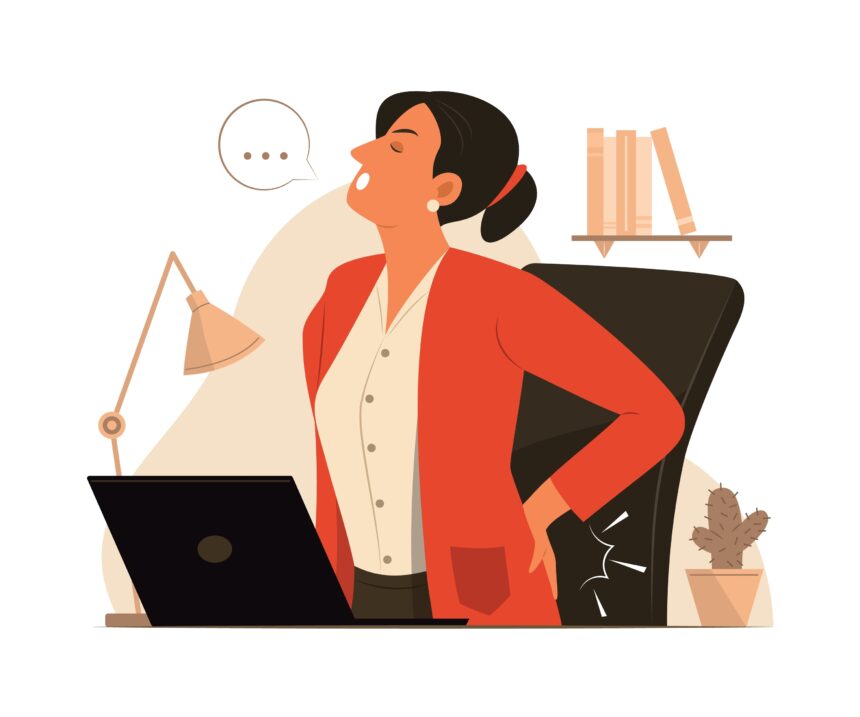At some point in your life, you must have experienced pain in a part of your body, like a stubbed toe or a headache. In fact, pain is the body’s way of letting you know that something isn’t right. So, if you’re injured or sick, you’ll know that you’ve got to do something about it.
Dealing with pain is inevitable, but there are methods you can use to manage it, such as undergoing physical therapies, trying complementary therapies like massage and acupuncture, and taking pain medicines.
Applying magnesium cream for relieving pain is an effective approach too. Magnesium can help reduce the sensation of pain, strengthen the cartilage that protects the joints, and manage arthritis.
However, finding the best treatment for a type of pain can be challenging. This guide will help you learn about ways to reduce pain.
The first thing you need to do is to identify the type of pain you’re feeling. It’s an important step in pain management. Once you know the type, you’ll be able to understand the cause and figure out the best treatment option.
Types Of Pain
There are various types of pain, and you might experience two or more of these simultaneously.
1. Neuropathic Pain
Adults usually feel neuropathic pain. This kind of pain is caused by nerve damage, a result from illness or injuries. For instance, you’re likely to suffer from neuropathic pain if a disc of your spine isn’t in alignment with other discs exerting pressure on the nerves. Furthermore, you might have neuropathic pain because of medical conditions, such as cancer, multiple sclerosis, diabetes, and shingles.
You can easily tell you’re suffering from this pain if you feel a prickling sensation, burning, shooting, or stabbing pain. Aside from this feeling, you could be hypersensitive to movement, touch, or cold and hot temperatures.
2. Chronic Pain
If you’ve been experiencing persistent pain for more than six months or almost daily, then you’re most likely dealing with chronic pain. This type of pain usually starts as acute pain. However, it can still persist after the affected area is healed and can range from mild to severe.
Twin Cities Pain Clinic mentions that chronic pain is usually associated with headaches, fibromyalgia, diabetes, back pain, and arthritis. In addition, it can affect your day-to-day life significantly, making you forgo physical activities. Thus, you could experience depression or feel isolated when you experience chronic pain.
3. Acute Pain
Acute pain builds up over a short period of time. It can manifest anytime due to certain factors, such as a medical procedure, illness, or injury. It’s usually sharp, but it can subside within days, weeks, or months post treatment.
4. Nociceptive Pain
Caused by tissue damage, nociceptive pain may also occur because of specific health conditions that cause tissue inflammation, including:
- Inflammatory bowel disease (IBD)
- Osteoporosis
- Arthritis
You might have nociceptive pain because of injuries as well, such as:
- Fractures
- Bruises
- Burns
- Cuts
When nociceptive pain builds up in your bones, joints, tendons, ligaments, muscles, and skin, it turns into somatic pain. But if it grows in your internal organs, it’s called visceral pain.
Depending on the fundamental cause, nociceptive pain can either be chronic or acute. It feels sharp, throbbing, and achy.
Causes Of Chronic Pain
A common condition in the elderly, chronic pain occurs as a result of injuries and nerve damage that haven’t healed completely.
For instance, back pain may be caused by a single or a combination of several factors, such as:
- Degenerative changes, like an aging spine
- Sleeping on a low-quality mattress
- Wearing high heels
- Traumatic injury
- Spine curvature (congenital condition)
- Poor posture
- Carrying and lifting heavy objects
Diseases, such as fibromyalgia, osteoarthritis, and rheumatoid arthritis, can lead to chronic pain as well. Persistent chronic pain could also be caused by ailments, like gallbladder disease, AIDS, stomach ulcers, multiple sclerosis, and cancer.
It’s possible to have chronic pain that isn’t linked to physical illness or injury. This kind of chronic pain is known as psychosomatic or psychogenic pain. It’s caused by psychological factors, like depression, anxiety, and stress. It could also be triggered by low endorphin levels in the blood, which are natural chemicals that usually bring about positive feelings.
To further understand the pain you’re feeling, it’s best to contact your doctor.
Diagnosis
During a consultation, your doctor will review your medical history, such as surgery, injury, or illness, and ask you to describe your symptoms. Additionally, they’ll conduct a physical exam and may request X-rays or blood tests.
Some of the tests that doctors perform to identify the cause of pain include:
- MRI: This test applies radio waves, a big magnet, and a computer to create clear pictures without the need for X-rays.
- CT scan: Computed tomography scans depend on computers and X-rays to develop pictures of the body’s cross-section.
- Discography: It’s a test that doctors use to decide the most suitable treatment, and it’s usually carried out for patients considering surgery to treat back pain.
- EMG: With an electromyogram,doctors can study muscle activity. Fine needles are inserted into your muscles to gauge how they respond to electrical signals.
- Ultrasound imaging: It’s also known as sonography or ultrasound scanning. It entails using high-frequency sound waves to develop pictures of the inside of your body.
- Myelogram: It’s usually performed for those with back pain. When you take this test, dye is injected into your spinal canal to pinpoint nerve compression that occurred because of fractures or herniated disks.
- Bone scans: These tests aid in diagnosing and monitoring fractures, infections, or bone disorders.
- Nerve blocks: They’re tests where doctors inject anesthetic into nerve areas to ease the pain.
Treatment Options For Pain
The treatment options you choose depend on some aspects, such as the duration of the pain, its intensity, its causes, and what improves or worsens it. Considering these factors will help you find the right solution to your pain.
1. Occupational And Physical Therapy
When you undergo occupational therapy, you’ll focus on performing particular tasks, such as boarding and onboarding the car and walking upstairs and downstairs.
During physical therapy, you’ll focus on stretching, strengthening specific muscles and recovering from the injury that causes the pain.
2. Massage Therapy
Massage therapy relieves muscle tension, helping you feel better. However, this treatment option may not be suitable for everyone. So, you’ll have to consult a physical therapist or a doctor to see if you’re eligible. And if you are, they can refer you to a massage therapist.
On your first session, let your massage therapist know what exactly your pain feels like. In case the massage feels intense or uncomfortable, don’t hesitate to inform your massage therapist.
3. Physical Activities
You might think that taking bed rest will make you feel better. But that may not be the case. It’s better to stay active since engaging in activities will help you regain your strength.
Your doctor can help you plan what activities you can do. For example, if you can no longer do morning runs because of chronic conditions, such as osteoarthritis, your doctor might recommend switching to another recreational activity, such as biking.
Walking is a simple physical activity that helps boost your endurance and strength and improves heart health. You can go for a 30-minute walk at least thrice every week. Start slowly and use a cane or a walker if you find it difficult to walk. Once you’ve gained enough strength, you can take longer strolls.
Just like walking, swimming helps address mobility issues. This is because it’s a therapeutic and low-impact exercise that relaxes your mind and lessens strain on your muscles and joints.
4. Counseling
You can reach out to a counselor if your pain becomes unbearable. A counselor can help you set goals, find a solution to your pain, and conduct cognitive behavioral therapy that aims to improve your way of thinking.
5. Complementary Treatments
Complementary treatments, such as spinal manipulation, biofeedback, and acupuncture, are excellent treatment options for managing pain.
Spinal manipulation involves the use of devices or hands to adjust your spine. This procedure helps lessen pain, allowing you to move better.
On the other hand, biofeedback trains you to manage how your body responds to pain. During biofeedback sessions, you’ll wear electrodes, which are hooked into a device that can track your skin temperature, breathing, as well as heart rate. This device also provides the results, which you can view.
An aspect of traditional Chinese medicine, acupuncture, entails inserting thin needles through your skin at certain points to bring back the body’s energy flow.
6. Relaxation
Deep breathing is just as effective in managing pain. When you focus on your breathing, toxins from your body are released. Apart from getting rid of toxins, deep breathing allows you to sleep better and encourages healthy blood flow.
The following are a few tips you can apply to calm your mind and concentrate on your breathing:
- Find a quiet and comfortable place. Lie down on a mat or lean back on a chair for 5 to 10 minutes.
- Take your time to relax. If you feel tense muscles somewhere, let it go.
- Inhale through your nose and exhale through your mouth or nose for several seconds.
Meditation is another relaxation method to consider. There are different types of meditation, and they include:
- Mindful meditation: This type of meditation is about focusing on your thoughts without judgement. You can do this on your own or with the assistance of an instructor.
- Body scanning:It involves concentrating on all parts of your body and relaxing them while you scan. You can do this meditation while lying or sitting down.
- Breathwork meditation: It uses a kind of breathing exercise to ease your mind and adjust your breathing pattern. It goes with mindful meditation occasionally, so you can focus better.
- Visualization meditation: It’s a technique that involves picturing something positive as you meditate. Its purpose is to help you stay calm, pay attention to your thoughts, and reduce pain or stress you might be experiencing.
Takeaway
In order to treat pain properly, you need to figure out what kind of pain you’re feeling and what causes it. Engaging in physical activities, such as walking and practicing meditation, are a few approaches you can take to manage pain. But it’s best to consult a doctor first if you’re dealing with pain, so you can get to the bottom of the problem and decide on the best course of action.







